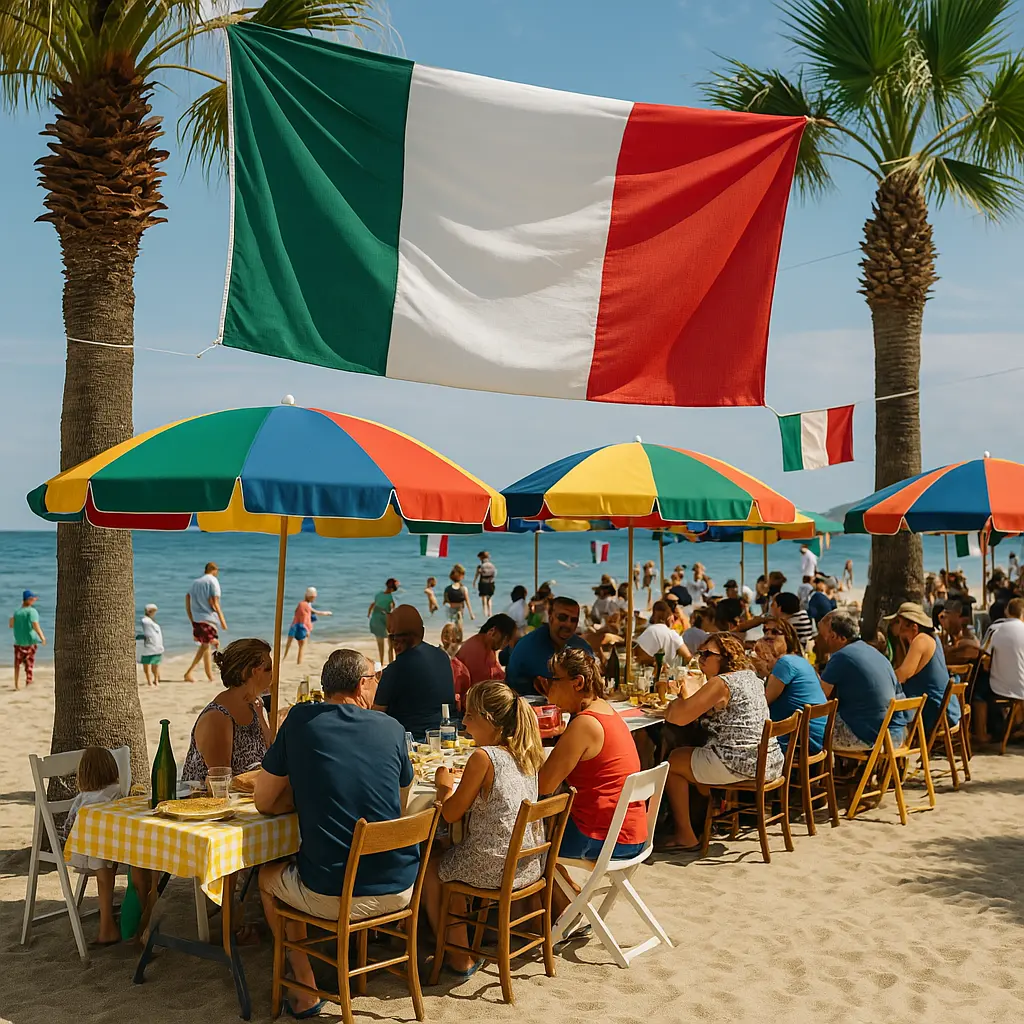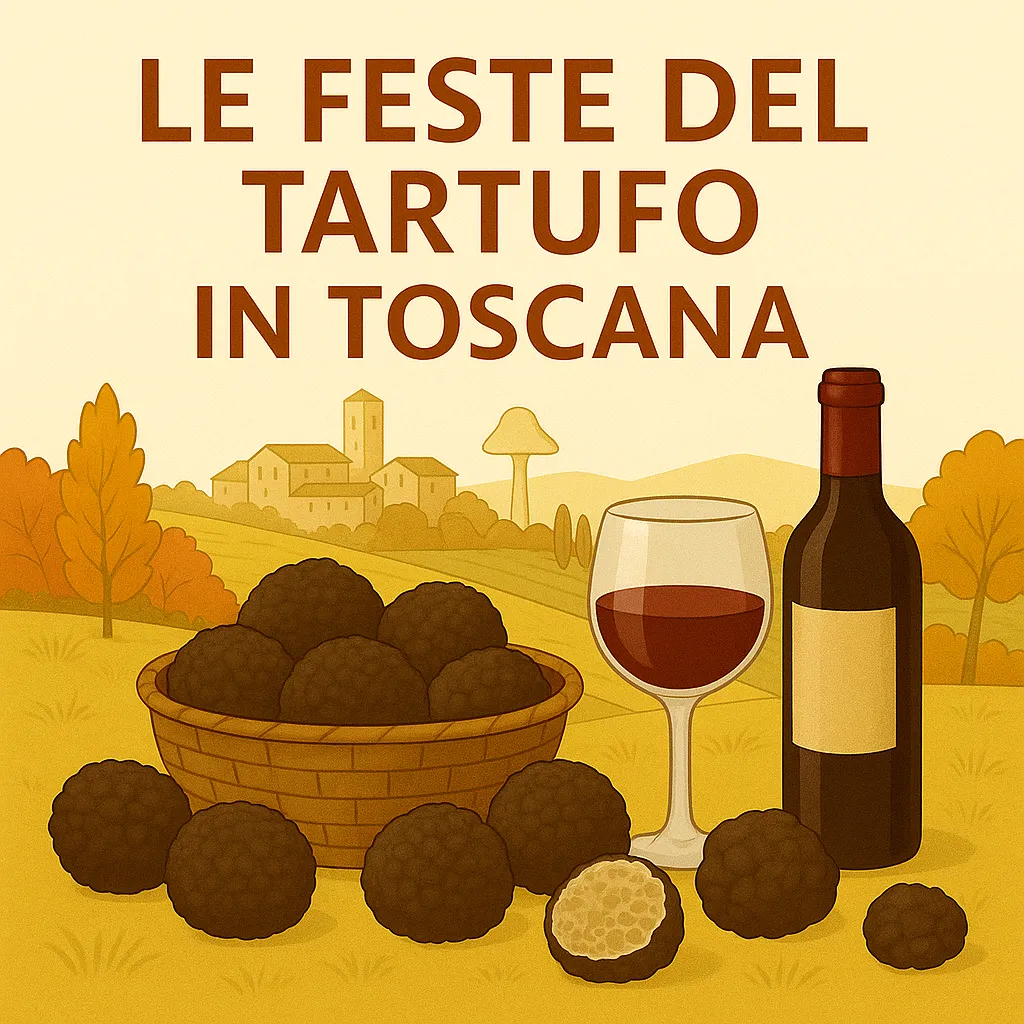August 15, the day of Ferragosto, represents one of the most anticipated moments of the Italian summer. This holiday, which combines ancient Roman roots with religious and popular traditions, is today synonymous with vacations, conviviality and discovery of the land. In this in-depth look at the history of Ferragosto, the traditions that still animate the Bel Paese today, and the best places to experience this unique day. A journey that will take us from the historical significance to the contemporary nature of the holiday, to the ideal destinations for an unforgettable Ferragosto.
The Origins of Ferragosto: From Augustus to Our Lady of the Assumption
The term “Ferragosto” is derived from the Latin Feriae Augusti, or “the rest of Augustus.” Established in 18 BC by Emperor Octavian Augustus, this holiday served to celebrate the end of summer agricultural work and offered workers a period of well-deserved rest. The celebrations were intertwined with pagan religious rites related to fertility and nature, such as the Vinalia Rustica or the Consualia, dedicated to Conso, god of the earth and crops.
During the Roman Empire, the Feriae Augusti were characterized by public festivities, equestrian games, and banquets. A mandatory break was granted throughout the empire, such that draft animals were decorated with flowers and peasants received small gifts from their masters.
With the advent of Christianity, Ferragosto became associated with theAssumption of the Virgin Mary, a dogma proclaimed only in 1950 but celebrated as early as the 6th century in the East and later in the West. The Assumption celebrates the ascension of Our Lady into heaven in body and soul, and became the religious holiday of August 15, merging with pagan customs and maintaining its festive importance in the Italian calendar.
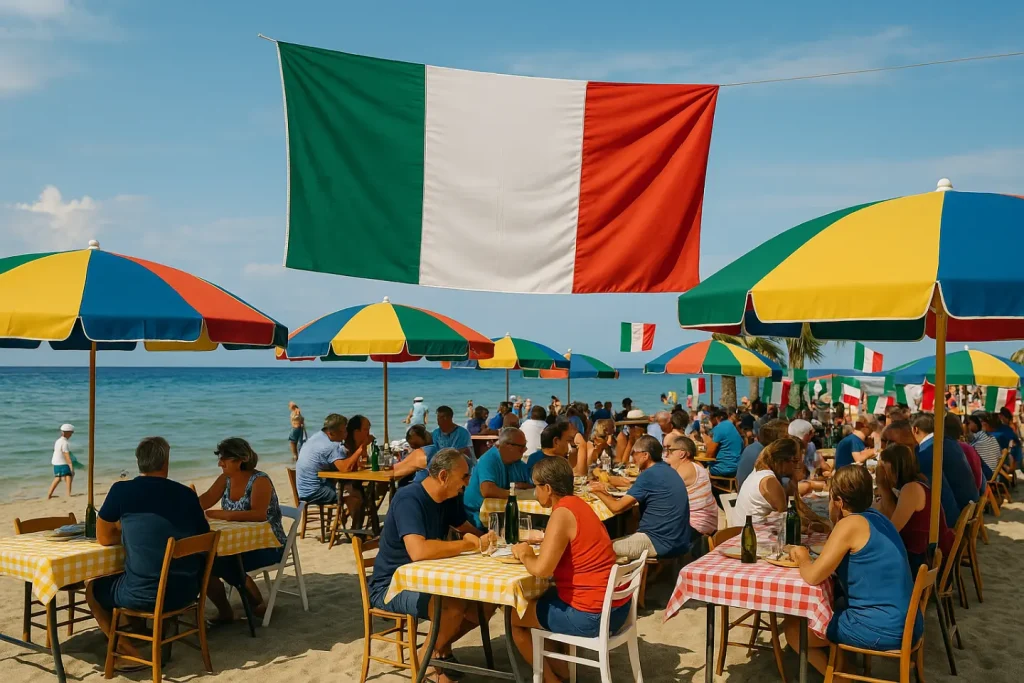
Ferragosto between Sacred and Profane: The Evolution of Tradition
Over the centuries, Ferragosto has taken on a wide cultural significance. From an imperial celebration to a religious holiday, it found its way into the daily lives of Italians, becoming one of the symbols of summer. The real turning point came during the years of the fascist regime, when the so-called“Ferragosto People’s Trains” were introduced: low-cost trips to seaside, mountain or art cities to allow even the less affluent classes to enjoy a trip.
This initiative started the still-living tradition of out-of-town trips and day trips organized precisely on August 15. Beginning in the 1960s, with the spread of the automobile and mass tourism, Ferragosto became the pinnacle of the Italian summer: the cities emptied out and the vacation resorts filled with life, color and sound.
Popular Traditions of Ferragosto in Italy
Ferragosto is celebrated in different ways from north to south, with numerous local traditions renewed each year, often related to nature, religion, or the simple desire to be together.
Outdoor lunches and barbecues
Ferragosto lunch is the quintessential symbol of the day. Families, friends, and entire communities organize for picnic lunches, barbecues in the countryside, picnics in the park, or cène on the beach. Menus vary according to regional traditions, but generally include fresh and hearty dishes, barbecued meat, wine, and typical desserts.
Religious events and processions
In the localities most connected to Christian tradition, processions are held in honor of Our Lady of the Assumption, often accompanied by folkloric celebrations. In some cities such as Messina, Trapani or Sassari, these processions reach spectacular proportions.
Fireworks and evening parties
Many Italian municipalities organize fireworks displays, free concerts, street parties and outdoor dances to celebrate the evening of Ferragosto. In places like the Amalfi Coast or Lake Garda, fireworks over the sea are an unforgettable spectacle.
Festivals and cultural events
Many villages organize festivals dedicated to local products, craft markets, historical re-enactments and outdoor theater performances. Ferragosto is an excellent opportunity to discover Italian food and wine culture in authentic settings.
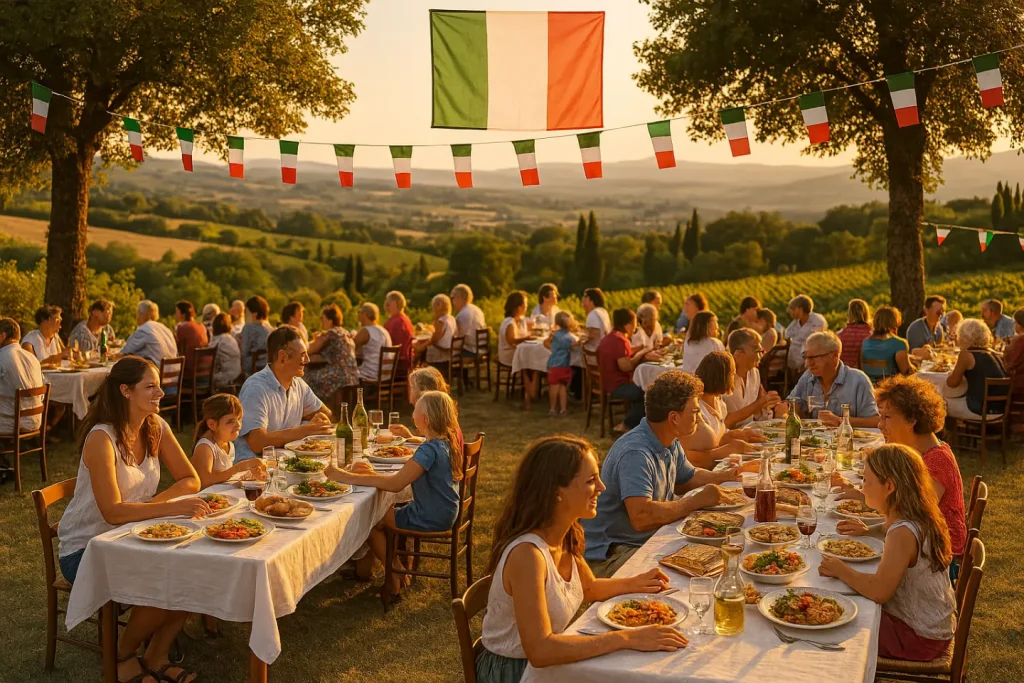
Where to Go in August: The Best Italian Destinations.
To the Sea
The sea remains the most popular choice for Italians at Ferragosto. Beaches get crowded, establishments hold parties and aperitifs, and coastal towns come alive with events for all ages.
- Amalfi Coast: Ravello, Amalfi and Positano offer breathtaking views and romantic atmospheres.
- Salento: between Caribbean beaches and folk traditions such as pizzica.
- Versilia and Maremma: for a mix of socialite, relaxation and good food.
- Sicily and Sardinia: with crystal clear waters and enchanted villages to explore.
In the Mountains
Those who prefer quiet and cooler weather will find refuge in the Italian mountains, where Ferragosto is synonymous with hiking, forest walks and mountain fare.
- Dolomites: perfect for scenic hikes and cozy refuges.
- Apuan Alps: ideal for a day immersed in nature.
- Tuscan-Emilian Apennines: with authentic villages and typical products to enjoy.
Among the Villages of Italy
Ferragosto is the perfect time to visit historic villages, where every corner tells a story and every stone has a soul.
- Val d’Orcia (Tuscany): with Montepulciano, Pienza and Bagno Vignoni.
- Langhe (Piedmont): home of wine and UNESCO hills.
- Umbria: between Spello, Bevagna and Assisi, for a Ferragosto between faith and culture.
In the City of Art
Ferragosto can also be an opportunity to visit museums, monuments and exhibitions in art cities, which are often less crowded than the rest of the year.
- Rome: outdoor concerts and special openings of museums and archaeological sites.
- Florence: cultural events, museum tours and tastings.
- Lecce: the “Florence of the South” with its baroque and folk festivals.
Ferragosto in Tuscany: A Model of Hospitality and Tradition
Tuscany represents one of the most popular destinations at Ferragosto. Not only for the beauty of its landscapes, but also for its ability to offer authentic experiences suitable for all types of travelers.
The most striking experiences:
- Dinners in the vineyard at sunset, among rows of vines and live music.
- Tastings of local wines accompanied by local products.
- Performances in villages, from concerts to outdoor theater.
- Traditional festivals, such as the steak festival in Cortona or the wild boar festival in Suvereto.
Recommended locations to experience Ferragosto in Tuscany:
- San Gimignano: for dinner with a view of the towers.
- Volterra: with historical re-enactments and medieval performances.
- Montepulciano: where celebration meets noble wine.
How to Organize a Perfect August Bank Holiday
To make the most of the August bank holiday, it is helpful:
- Plan ahead: many experiences require reservations, especially in high season.
- Choosing the right company: Ferragosto is better when shared.
- Respect nature: if you choose an outdoor picnic or barbecue, it is important to leave everything clean.
- Letting yourself be surprised: perhaps discovering an unplanned village festival or concert.
Conclusion
Ferragosto is more than a holiday: it is a collective ritual, a moment that unites Italy in the celebration of beauty, sharing and leisure. Between tradition and innovation, sacred and profane, each region offers a different way to experience it. If you want to spend an authentic Ferragosto among enchanting villages, culinary experiences and breathtaking landscapes, Tuscany By GC accompanies you with tailor-made tours to experience every moment under the most beautiful light of the Italian summer. Contact us to build your perfect itinerary!
